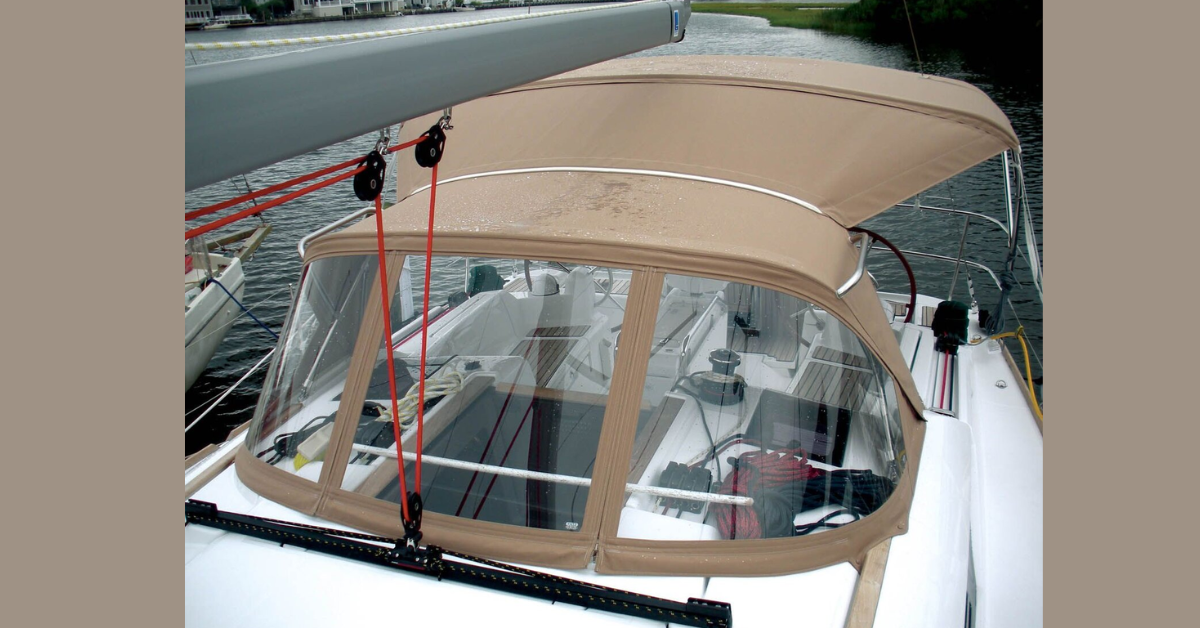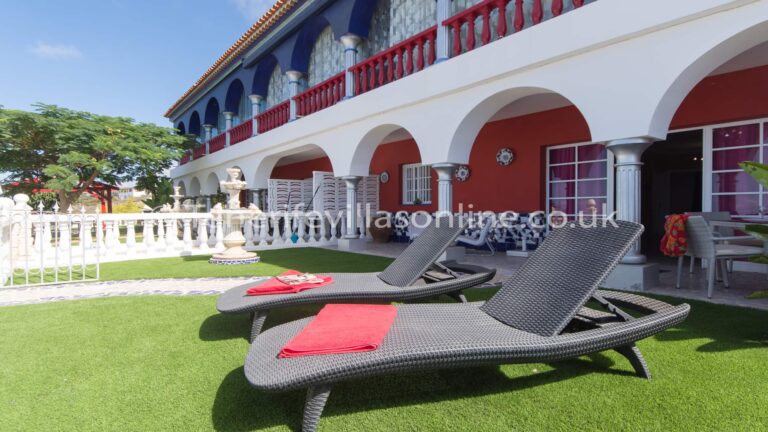The Resilient World of Marine Canvas: Applications, Benefits, and Innovations
In the dynamic and demanding environment of the open sea, materials must endure far more than in terrestrial settings. That is precisely where Marine Canvas plays a crucial role—serving as a durable, weather-resistant, and highly functional fabric solution for various maritime applications. From bimini tops and sail covers to boat enclosures, awnings, and upholstery, marine canvas is designed to handle harsh UV exposure, salt spray, intense winds, and constant moisture. In this article, we’ll dive deep into what marine canvas is, why it’s indispensable in nautical contexts, how it’s made, its most common uses, the advantages it offers, innovation trends, maintenance tips, and what one should consider when selecting marine canvas.
What Is Marine Canvas?
Marine canvas refers to specially engineered fabrics tailored for marine and coastal environments. Unlike standard canvas, which might be adequate for tents, backpacks, or awnings on land, marine canvas is formulated to resist degradation from saltwater corrosion, ultraviolet (UV) radiation, mildew, algae, and abrasion. It often uses synthetic fibers such as acrylic, polyester, or PVC-coated fabrics, which combine strength, flexibility, and protective coatings.
Rather than being simply aesthetic, marine canvas must fulfill demanding performance criteria. It must keep water out (or at least resist it), provide shade, sustain repeated folding and tensioning, maintain shape under wind loads, and resist fading and microbial growth.
Manufacturing: Materials, Construction, and Treatments
Fiber Base Materials
-
Polyester and acrylic: These are common because they combine strong tensile strength, dimensional stability, and better resistance to UV degradation than natural fibers.
-
Vinyl or PVC-coated fabrics: These provide superior waterproofing and are easier to clean, though they may be heavier and less breathable.
Weave and Stitching
-
Tight weave: To reduce air and water permeability, marine canvas is often woven tightly.
-
Double-stitching and reinforced seams: These help the fabric endure sharp loads and stress without tearing.
-
Tape or seam sealing: To enhance waterproof performance, seam tapes or coatings are applied over stitching lines.
Treatments & Coatings
-
UV inhibitors: Incorporated into fibers or surface coatings to slow degradation from sunlight.
-
Water-repellent or waterproof coatings: Such as durable water repellent (DWR) finishes, topcoats, or laminates.
-
Anti-microbial, mildew-resistant additives: To prevent fungi or molds under damp, warm conditions.
-
Fire retarding treatments (in some contexts): In particular for enclosed cabins, certain safety regulations may require flame-resistant properties.
Manufacturers frequently combine these approaches to ensure marine canvas performs reliably over years of constant exposure to punishing maritime conditions.
Key Applications in the Marine Realm
Marine canvas finds use in many facets of boat and yacht outfitting. The following areas highlight where its resilience and adaptability are most valued:
1. Bimini Tops & Sun Shades
One of the most recognizable uses, bimini tops offer shade and protection from sun exposure on the cockpit or deck. Marine canvas is ideal here as it must block UV rays, withstand wind pressure, and remain taut.
2. Sail Covers, Boom Covers & Lazy Jacks
Protecting sails when not in use is essential. Canvas covers keep sails safe from UV damage, moisture, and airborne contaminants.
3. Boat Enclosures & Dodger Hoods
To shield interiors or helm stations from wind, spray, or storms, enclosed canvas structures (often with clear windows) are common. Marine canvas must adhere to frames, resist wind load, and provide waterproofing.
4. Upholstery & Cushions
Seating, benches, and mattresses used outdoors must resist fading, moisture ingress, mildew, and wear. Marine canvas upholstery fabrics fill that niche.
5. Awnings & Shade Structures
Beyond the boat, for docks, marinas, and harbors, canvas awnings must resist sun, rain, and storms while offering aesthetic appeal.
6. Covers & Tarpaulins
From engine covers to full boat covers, marine canvas stands between delicate components and the harsh elements—wind, rain, UV, salt spray.
Advantages & Performance Benefits
Marine canvas offers a strong value proposition because of its ability to combine multiple performance attributes. Let’s examine its advantages:
Durability & Longevity
Thanks to UV inhibitors, robust fiber construction, and protective coatings, high-quality marine canvas can last many years with proper care—even under relentless exposure.
Water Resistance & Breathability
Well-engineered marine canvas can block rain and spray while maintaining a degree of breathability to avoid heat and moisture trapping, which can lead to mildew. Some heavier coatings may sacrifice breathability for full waterproofing, so it’s a trade-off based on application.
Fade & Color Retention
Lightfast dyes and stabilizers allow marine canvas to retain color better than generic fabrics, weathering the sun rather than turning dull quickly.
Structural Integrity
Strong tensile strength and stable dimensions mean that it can be stretched tight, resist sagging, and maintain form under wind or load.
Low Maintenance
While no fabric is maintenance-free, marine canvas generally withstands cleaning, resists mildew, and retains performance with periodic care, making it more convenient than untreated natural fabrics in marine environments.
Customization & Aesthetics
Marine canvas can be produced in multiple colors, textures, and patterns, allowing boat owners to match décor or branding. Additional features like zippers, windows, fasteners, and reinforcement panels can be integrated.
Thermal & Light Control
In some cases, canvas can reduce heat buildup or glare on deck or interiors, making outdoor spaces more comfortable under sun exposure.
Challenges & Considerations
While marine canvas is a robust and versatile solution, it does come with challenges and trade-offs. Awareness of these helps make better choices.
Weight & Bulk
Heavily coated or thick fabrics weigh more, which matters on boats where weight and balance are critical. Folding or stowing bulky canvas can also be awkward.
Breathability vs. Waterproofing
There is often a balance: fully waterproof fabrics may reduce breathability, increasing condensation or heat buildup under covers or enclosures.
Cost
High-performance marine canvas tends to cost more than general-purpose canvas or fabrics, due to materials, treatments, and manufacturing complexity.
Hardware & Attachment
Even the best canvas can fail if fasteners, frames, zippers, or seams are poorly designed or installed. These auxiliary components must be marine-grade (e.g. corrosion-resistant) and well integrated.
Maintenance Requirements
To preserve its properties, marine canvas typically requires regular cleaning, re-application of repellents, inspections for stitching wear, and seasonal storage procedures.
UV & Salt Fade Over Time
No fabric lasts forever—eventually, UV exposure and salt corrosion degrade coatings and fibers, leading to stiffening, cracking, or failure of seams.
Best Practices for Maintenance
To maximize the lifespan and performance of marine canvas, owners and fabricators should adopt careful maintenance routines:
-
Regular Cleaning
-
Use mild soap (e.g. non-detergent) and soft brushes or sponges.
-
Rinse thoroughly with fresh water to remove salt, dirt, and pollutants.
-
Never use harsh solvents or bleach unless specifically recommended.
-
-
Re-treatment & Recoating
-
Periodically reapply a suitable water-repellent treatment or topcoat to restore waterproofing.
-
Avoid overapplication—follow manufacturer guidelines.
-
-
Inspection & Repair
-
Routinely inspect seams, stitching, fasteners, zippers, and windows for wear or failure.
-
Promptly repair minor tears or seam separations to prevent escalation.
-
-
Proper Storage
-
When not in use, dry the canvas fully before storage to prevent mildew.
-
Fold or roll loosely; avoid sharp creases or tight bundling.
-
Store in a ventilated, shaded place to reduce UV and humidity damage.
-
-
Frame & Hardware Care
-
Maintain frames, poles, zippers, and snaps—lubricate zippers, rinse hardware, and ensure proper alignment to avoid stress on the canvas.
-
-
Avoid Abrasion & Sharp Edges
-
Prevent the canvas from rubbing against metal edges or fittings.
-
Use protective edging or reinforcing panels in high-wear zones.
-
By integrating maintenance into regular vessel care, users can prolong service life significantly, often years beyond what unmanaged canvas might last.
Emerging Trends & Innovations
The marine canvas industry continues evolving, adopting new materials, processes, and added functionalities to meet modern demands. Some of the notable trends include:
-
Nanocoatings and advanced membrane technologies
New micro- or nano-scale coatings enhance water repellency and dirt resistance without sacrificing breathability. -
Lightweight composites
Hybrid fabrics combining fibers (e.g. aramid, high-tenacity polyester) and thin coatings yield strength with lower weight. -
Smart textiles & sensors
Incorporation of temperature, moisture, or strain sensors directly into canvas for performance monitoring or predictive maintenance. -
Eco-friendly & recyclable materials
The push for sustainability has inspired bio-based coatings, greener dyes, and recyclable fabrics that maintain marine-grade performance. -
Improved modular systems
Snap-in panels, interchangeable windows, tensioning systems, and modular segments make repairs and upgrades easier for boat owners. -
Thermal & solar control coatings
Fabrics that block heat, UV and glare more effectively to promote comfort inside enclosures or under shade.
Such innovations help marine canvas maintain relevance and excellence as demands on vessels (personal yachts, charters, commercial boats) evolve.
Choosing the Right Marine Canvas: What to Look For
When selecting a marine canvas for your application, several criteria should inform your decision:
-
Intended Use & Exposure Level
-
Is it for a modest sun shade or a full enclosure?
-
Will it face continuous mildew, salt spray, and UV?
-
Choose coatings and fabric weights accordingly.
-
-
Weight vs Performance Trade-off
-
Lighter fabrics ease handling and reduce strain on frames.
-
Heavier fabrics may offer greater durability or waterproofing.
-
-
Water Resistance & Breathability Ratings
-
Check manufacturer specifications for water penetration resistance (e.g. hydrostatic head) and air permeability.
-
-
UV / Color Fastness
-
Look for certifications or test ratings about fade resistance under sunlight.
-
-
Mildew / Anti-microbial Properties
-
For humid, warm environments, this is crucial to avoid mold growth.
-
-
Seam & Stitching Quality
-
Reinforced seams, double stitching, sealed tape over stitches—these features enhance longevity.
-
-
Hardware Compatibility & Attachment Methods
-
Confirm zipper quality, fastener spacing, snap positions, and frame compatibility.
-
-
Warranty & Manufacturer Support
-
A longer warranty suggests confidence, and good support helps with repairs or parts.
-
-
Color / Aesthetic Options
-
Select colors that blend with boat styling, but also keep practicality—darker colors may retain heat.
-
-
Reputation & Proven Use Cases
-
Seek suppliers or brands known in marine markets, with references in harsh environments.
-
By balancing these factors, one can choose a marine canvas solution that meets both functional and aesthetic needs.
Real-World Examples & Use Cases
-
Cruiser yacht shade systems: Many cruisers deploy bimini tops and cockpit enclosures made of marine canvas with heavy-duty zippers and clear isinglass windows. These protect helm and living areas while allowing ventilation and visibility.
-
Sailboats: Sail covers, lazy jacks bags, and boom covers made from marine canvas preserve sail life, reducing UV damage and wear during storage or while moored.
-
Commercial vessels: Offshore service vessels, research boats, and fishing vessels often use marine canvas for protecting delicate equipment, walkways, or crew areas against spray and sun.
-
Marina awnings: Docks and slips use canvas awnings to shade walkways and protect boats—requiring strong UV and weather resistance in harsh local climates.
-
Pontoon and leisure boats: Shade canopies, recliner cushions, and upholstery using marine canvas enhance comfort and aesthetics while resisting water damage.
These examples illustrate how marine canvas integrates into many systems on vessels, from functional protection to visual appeal.
Conclusion
In the demanding realm of maritime environments, marine canvas stands out as a vital material—bridging the gap between protection, durability, and adaptability. Its capacity to resist UV radiation, absorb or shed water, withstand wind loads, repel mildew, and preserve aesthetics makes it indispensable for modern boat owners, shipbuilders, and marine service professionals. While challenges remain—such as finding the right balance between breathability and waterproofing, or managing weight and cost—ongoing innovation continues to push the boundaries.
By understanding how marine canvas is designed, where and how it’s used, how to properly maintain it, and what to look for when selecting it, stakeholders can ensure they’re getting the most from their investment. Whether for luxury yachts, workboats, or leisure crafts, marine canvas remains a key enabler of comfort, protection, and longevity in environments where every material is tested by sun, salt, and storm.







